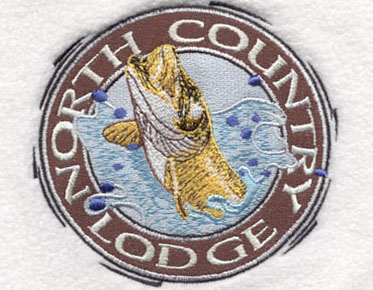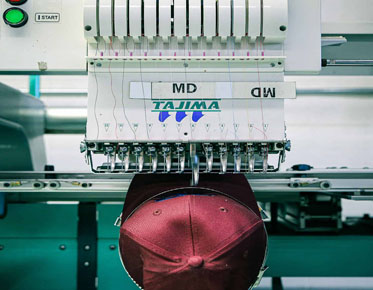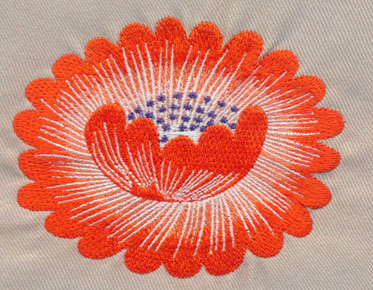4 Major Differences Between Embroidery And Cross Stitch
If you're also looking for embroidery
vs cross-stitch answers, here's a great tips from Eagle Digitizing for everyone who loves to sew.
Whether you are just starting out or an experienced craftsman, this blog will
be helpful for you!
What is the difference between
embroidery and cross stitch?
1. Purpose
You already know that embroidery is
related to the craft of embellishing fabric with other types of materials done
with needle or thread. Meanwhile, cross stitch is a unique embroidery technique
in which an embroiderer should use X-stitches to create designs or patterns on
fabric.
2. Sutures
You should focus on using the correct
X-stitch and other stitches such as run stitch, chain stitch; blanket stitch
should be used in cross-stitch embroidery.
3. Fabric
Another difference between embroidery
and cross-stitch is the type of fabric. While cross stitch requires woven
fabrics, embroidery work requires the use of a variety of fabrics. The fabrics
of the two are different, and the choice of fabric is very important. You can
also cross stitch with linen or aida fabric and embroider with other fabrics
like linen, cotton, scrap canvas, silk, etc.
Choose a fabric that matches your
craft. Then, depending on the project, you should choose the structure.
4. Needle
Both cross-stitch and embroidery
require different needles for sewing projects. Both embroidery and cross-stitch
projects require some type of needle.
Without the right needle, you can get
accurate results for your project. Whether you use embroidery or cross stitch,
the needle size, point, and eye are all that matters.
For the needle point, cross stitch
needles have blunt and rounded ends. At the same time, the tip of the
embroidery needle is sharp, and for the size of the needle, the correct needle
is necessary. You need a large needle for cross stitch and a small needle for
embroidery.
What is Embroidery?
Starting with embroidery, there is an
art to decorating some material with the help of thread and needles. This is a
broad term used to refer to unique fabric techniques that can be used for upholstery
fabrics.
It involves using different types of
stitches and decorative beads or petals to create beautiful designs. Some other
elements used in embroidery are sequins, quills, yarn, etc.
You can use an embroidery machine or
make embroidery designs by hand. Hand embroidery can be used with a wider
selection of fabrics and allows you to work with more unique designs
Hand embroidery designs are unique
works of art with the designer's personal touch and design. There are many
embroidery works out there such as crew work, drawn thread embroidery, needle point,
stump work and many more.
Several different knots and stitches
can be combined to create designs and patterns. As you can see, the embroidery
relies on only one stitch throughout the project.
Today, needlework is above fashion
clothes. You can follow specific embroidery patterns in your sewing projects,
but hand embroidery doesn't use counting or pattern stitches.
Instead, you can use some common
stitches: French knot, lazy daisy, back stitch, herringbone stitch, satin
stitch, etc. Hand embroidery is much more accessible when it comes to mixing
together, since only a few long or short stitches are needed to bring the
colors together.
There are also three-dimensional
stitches, such as cast stitch, herringbone stitch, and pinwheel rose.
Meanwhile, machine embroidery involves
embroidery or automatic sewing machines that create various patterns and
designs on fabric.
Machine embroidery is more convenient
and time-saving than hand embroidery work, but hand embroidery allows you to
use more creativity and technique.
What is cross
stitch?
Cross-stitch is a form of hand
embroidery that uses conform and X-shaped stitches to tile a pattern. It is one
of the oldest forms of hand embroidery.
It has become quite famous in recent
years, and for good reason. It's ideal for beginner needleworkers for a few
reasons.
The first reason is that cross stitch
uses the basic X stitch, which is the easiest stitch pattern to learn. It can
be used to create cross-stitch art and you don't need to learn different
embroidery methods at first.
The second reason cross stitch is
popular among beginners is that it is a form of counted thread embroidery and
uses tiled patterns. When cross-stitching, you use a pre-planned design printed
on the fabric of your choice and follow the color cross-stitch pattern.
Because cross-stitch uses tiled
patterns, the designs often look angular and boxy. Nonetheless, it can be used
to create attractive and intricate designs and is often used to embroider slogans
or text on fabric.
One can do cross stitch on a woven
fabric with holes in a grid system, where the colored threads should go.
Commonly used fabrics in cross stitch for beginners are Cotton, Jobran and
Lugana.
However, cross stitch uses embroidery
floss, but only two or three of the six strands are needed. The final product
usually lies flat on the fabric compared to other types of needlework which
have a higher texture.
One can use master stitches in cross
stitch: full stitch – X shape, half stitch – diagonal, quarter stitch – half
stitch and half stitch, three quarter stitch – three quarter and a half stitch,
back stitch – Straight stitches, etc.
These are some of the main stitches
used for cross stitch and can be varied in various ways to create various
designs and patterns.
When it comes to stamped cross stitch,
you can choose to print the pattern on the fabric, then use that pattern as a
guide to come up with the final design. With counting cross stitch, you need to
start at the center to develop the final design.
Keep in mind that the fabric you will
be using should have a similar number of threads both vertically and
horizontally, this is to get even stitches on your cross stitch designs.
Generally, embroidery prefers cross stitch to create various decorative items
such as cushions, wall hangings, bookmarks and coasters.



